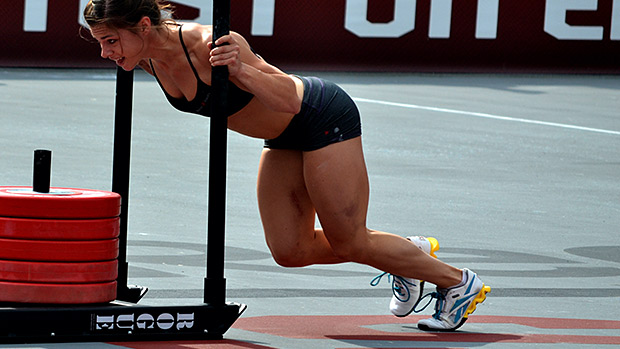Should You Do Box Jumps for Conditioning?
I have mixed feelings about this. The first 10 years of my career was spent training pro and high-level amateur athletes, so the strength coach in me hates it when an exercise is used for a different purpose than what it's designed to do.
High-rep Olympic lifts and high-rep jumps are at the top of that list. It's not so much because of the increased risk of injuries (although it can be a problem) but because it's like using a screwdriver to hit a nail.
Jumps' primary benefit is to increase power production and jumping height. This is best done by doing all-out efforts – trying to jump up as high as possible – or at least 85-90% efforts. And an all-out jump is very demanding on the nervous system; it's a max effort just like a heavy squat. That's why very high reps are counterproductive toward the main goal of the exercise.
First, when you have very high reps, you'll never do max effort jumps. You jump just high enough to reach the box, saving energy to do all the reps. You never jump "hard enough" to increase power production. You'll also learn bad motor habits because most of the jumps will be done in a fatigued state.
So as a strength coach my answer is that using box jumps for conditioning is a big no-no. It's like sprinting with an 80 pound vest with the goal of building muscle. I'm not saying it won't have an effect, but it will mess up your running mechanics, making you slower.
But What If You're Not an Athlete?
And what if your goal is to get leaner, not to jump higher? What we have to do is look at high-rep box jumps and assess if the risks outweigh the benefits.
I do believe that explosive work like jumps and sprints will get the lower body harder, leaner, and tighter. I've seen it happen over and over again. I can't explain exactly why. It could be from an increase in muscle insulin sensitivity (some studies point to that) or targeting the fast twitch fibers, which are more superficial. But the effect seems to be real.
So, high-rep box jumps are an inferior form of explosive training but it's explosive training nonetheless, so I'm not excluding their potential effect on leanness.
But Let's Look at the Potential Dangers
I've coached a lot of athletes and have seen many injuries from box jumps. "But I've never been injured doing them!" Sorry, that has never been and never will be something that proves that something isn't dangerous.
Shin injuries from missing the box are common: people land a bit too close to the edge of the box and slip. While most of those who have that happen only have a superficial (but very painful) injury, some can actually do structural damage to their tibia.
That was my case 20 years ago when I was prepping for the National Weightlifting Championships and using box jumps as an activation exercise. I hit my shin hard and had to miss two weeks of training.
The other source of injury is the landing. We've seen high-level CrossFit athletes, who are in much better physical condition than you or me, tear their Achilles tendon while landing from box jumps. I've also seen knee injuries.
See, when you land from a 20-24" drop (height of a regular box) the force during the absorption phase will be at least 4 times your body weight and can be as high as 6 times.
If you're 130 pounds that means at least 520 pounds of force on your knees, hips, and ankles. So the potential for injury is there, especially since most people don't focus on the landing phase of a jump.
The risk of injury is likely not as high as the internet "experts" make it out to be. But it's still higher than most exercises you could use instead.
A Better Way
Prowler/sled sprints or hill sprints would likely give you the same kind of results. In fact, Prowler sprints are one of the best ways to get a woman's legs lean and hard.
But if you still want to use box jumps, do them the smart way: don't do them for speed or for super-high reps. But you can still include them in a metcon format. Here's an example:
Four Rounds:
- 10 Box Jumps (10 is the highest I would go)
- Note: Stay two seconds on the box and two seconds on the floor (to avoid rushing into the jumps and landings); focus on proper landing mechanics both on the box and on the floor.
- A 250 Meter Row
- 20 Russian Kettlebell Swings
- Rest 1 minute and repeat 3 times.
You'll still get the benefits from the explosive work and will greatly diminish the risk factor.






